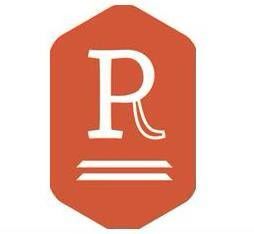Luxury Vinyl Plank (LVP) has surged in popularity as a versatile, stylish, and durable flooring option, often outshining traditional materials like hardwood, tile, and carpet. With its ability to mimic natural textures while offering superior practicality, LVP is a game-changer for homeowners seeking a balance of aesthetics, affordability, and functionality. This article delves into the key advantages of LVP over traditional flooring, explores its installation and removal processes, provides maintenance tips, and answers frequently asked questions to help you decide if LVP is right for your home.
Why Choose LVP Over Traditional Flooring?
Traditional flooring options like hardwood, ceramic tile, and carpet have long been staples in homes, but they come with drawbacks—high costs, intensive maintenance, or limited durability. LVP addresses these challenges, offering a modern alternative that combines the best of beauty and resilience. Here’s why LVP stands out:
1. Cost-Effectiveness
Benefit: LVP is significantly more affordable than hardwood or stone tile, often costing a fraction of the price while delivering a nearly identical look. Unlike carpet, which requires frequent replacement, LVP’s longevity makes it a budget-friendly choice over time.
Comparison: Hardwood can cost $8-$15 per square foot, and ceramic tile ranges from $5-$10, while LVP typically falls between $2-$7 per square foot, including installation. This affordability allows homeowners to achieve a premium aesthetic without breaking the bank.
2. Exceptional Durability
Benefit: LVP is engineered to withstand heavy foot traffic, scratches, and spills, making it ideal for homes with pets, children, or busy lifestyles. Its wear layer protects against dents and fading, ensuring long-lasting performance.
Comparison: Hardwood scratches easily and requires refinishing, tile can crack under impact, and carpet stains quickly. LVP’s resilience outperforms these, with many products lasting 15-25 years with proper care.
3. Water Resistance
Benefit: LVP is highly resistant to moisture, making it perfect for kitchens, bathrooms, laundry rooms, and basements. Many LVP products are 100% waterproof, preventing warping or mold growth.
Comparison: Hardwood warps in humid conditions, tile grout can harbor moisture, and carpet is prone to mold if wet. LVP’s water resistance ensures worry-free use in damp environments.
4. Easy Maintenance
Benefit: LVP requires minimal upkeep—regular sweeping and occasional damp mopping keep it looking pristine. Unlike traditional flooring, it doesn’t need polishing, refinishing, or specialized cleaners.
Comparison: Hardwood demands periodic refinishing, tile grout needs scrubbing, and carpet requires frequent vacuuming and professional cleaning. LVP’s low-maintenance nature saves time and money.
5. Versatile Aesthetics
Benefit: LVP comes in a wide range of designs, mimicking hardwood, stone, or even unique patterns, with realistic textures and embossing. It complements any decor, from rustic to modern.
Comparison: While hardwood and tile offer natural beauty, their design options are limited compared to LVP’s vast array of colors and styles. Carpet’s aesthetic is less versatile and dates quickly.
6. Comfort and Sound Insulation
Benefit: LVP is softer underfoot than tile or hardwood, providing comfort for standing or walking. Its underlayment reduces noise, making it ideal for multi-story homes or apartments.
Comparison: Hardwood and tile can feel cold and hard, amplifying sound, while carpet offers cushioning but traps allergens. LVP strikes a balance, enhancing comfort and quietness.
Installation Process for LVP
LVP’s installation is straightforward, contributing to its appeal. The process includes:
-
Acclimation: Planks are left in the room for 48 hours to adjust to temperature and humidity.
-
Subfloor Prep: The subfloor is cleaned, leveled, and checked for moisture. An underlayment is laid for cushioning and sound reduction.
-
Installation: Planks are clicked or locked together, starting along a wall, with precise cuts for a seamless fit. Some LVP requires adhesive for added stability.
-
Finishing: Baseboards are reinstalled, and transitions are added at doorways.
Timeline: For a 500-square-foot room, LVP installation typically takes 1-2 days, including subfloor prep. DIY-friendly click-lock systems can speed up the process, while glued-down LVP may require professional expertise.
Removal Process for LVP
Removing old LVP or other flooring is often necessary to ensure a smooth new installation. The process involves:
-
Clearing the Space: Furniture and fixtures are removed, and baseboards are carefully detached.
-
Lifting Planks: Starting from an edge, planks are pried up using a pry bar or scraper, taking care to preserve the subfloor.
-
Adhesive Removal: For glued LVP, solvents or heat loosen the adhesive. Debris is cleared.
-
Subfloor Prep: The subfloor is inspected, leveled, and cleaned, ready for new flooring.
Timeline: Removing LVP from a 500-square-foot area takes about 1 day, with glued-down planks potentially adding a few hours.
Maintenance Tips for LVP
To keep LVP looking its best, follow these simple tips:
-
Regular Cleaning: Sweep or vacuum daily to remove dirt and debris. Use a soft-bristle broom to avoid scratches.
-
Damp Mopping: Clean with a damp mop and mild, vinyl-safe cleaner weekly. Avoid soaking the floor to prevent water seepage.
-
Prevent Scratches: Place felt pads under furniture legs and avoid dragging heavy objects. Use rugs in high-traffic areas.
-
Spill Management: Wipe spills immediately to prevent staining, though LVP’s water resistance minimizes risks.
-
Avoid Harsh Chemicals: Skip abrasive cleaners or wax, which can dull the finish. Stick to manufacturer-recommended products.
Frequently Asked Questions (FAQs)
Q: Why should I choose LVP over hardwood or tile?
A: LVP is more affordable, easier to maintain, and highly durable compared to hardwood, which scratches and warps, or tile, which can crack and requires grout cleaning. LVP’s water resistance and design versatility make it a practical, stylish choice for any home.
Q: Is LVP suitable for all rooms in the house?
A: Yes, LVP’s water resistance and durability make it ideal for kitchens, bathrooms, living rooms, basements, and bedrooms. Ensure proper underlayment for moisture-prone areas like basements.
Q: How long does LVP installation take?
A: For a 500-square-foot room, LVP installation takes 1-2 days, including subfloor prep and cutting. Removing existing flooring adds about 1 day, depending on the material and adhesion.
Q: Can I install LVP myself?
A: Click-lock LVP is DIY-friendly, requiring basic tools like a utility knife and measuring tape. Glued-down LVP is trickier and may benefit from professional installation to ensure a secure bond.
Q: How long does LVP last, and when should it be replaced?
A: With proper care, LVP lasts 15-25 years. Replace it if you notice significant wear, peeling, or if you want a style update. Regular maintenance extends its lifespan.
Q: How do I maintain LVP to keep it looking new?
A: Sweep or vacuum regularly, mop with a damp cloth and mild cleaner, and wipe spills immediately. Use protective pads under furniture and avoid harsh chemicals to preserve the finish.
Q: Can LVP be installed over existing flooring?
A: In some cases, LVP can be installed over flat, stable surfaces like tile or concrete, provided the subfloor is level and clean. However, removing old flooring is recommended to avoid height issues or subfloor damage.
Conclusion
Luxury Vinyl Plank (LVP) offers a compelling alternative to traditional flooring, combining affordability, durability, and stunning aesthetics. Its water resistance, easy maintenance, and versatility make it a top choice for modern homes, outpacing hardwood, tile, and carpet in practicality. With straightforward installation, efficient removal, and simple upkeep, LVP transforms spaces without the hassle or high costs of traditional materials. By understanding its benefits, timelines, and maintenance needs, you can confidently choose LVP to elevate your home’s style and functionality for years to come.

